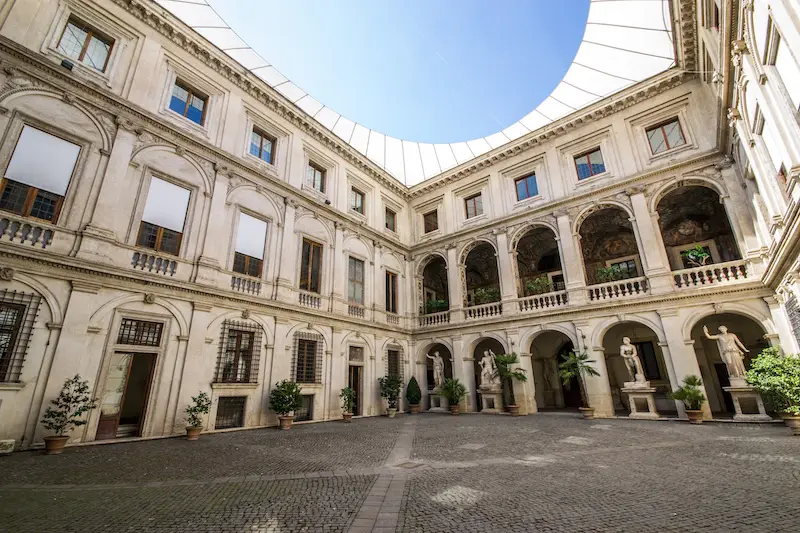Are you passionate about art and planning a trip to Rome to explore the history and culture that has permeated the Eternal City over the centuries?
The numerous Capitoline museums scattered throughout the city offer visitors an immersive experience that connects them closely with unique works of art and archaeological artifacts, providing a thorough and detailed insight into the city’s millennia-long history.
The History of the Palace
One of the most appreciated and fascinating museums in Rome is located just a few steps from one of the city’s most iconic squares, Piazza Navona. We’re talking about the Museo Altemps, built in the 15th century by the Riario family but known by the name of the famous noble family because in 1568 it was purchased by Cardinal Marco Altemps, remaining in fact owned by the family until modern times. Among the last descendants of the family was Lucrezia Altemps, who in 1883 married Gabriele D’Annunzio in the private chapel inside the palace. The palace was then purchased by the Italian state in 1982 and transformed into a museum in 1997.
Masterpieces Contained in the Museum
A less frequented location, and therefore off the beaten path of the most well-known tourist destinations, the palace is one of the four branches of the Museo Nazionale Romano – the other three branches being Palazzo Massimo alle Terme, Crypta Balbi, and Terme di Diocleziano. It houses a series of highly prized works that once belonged to the private collections of some of the most prominent Roman families such as the Mattei, the Boncompagni Ludovisi, and, indeed, the Altemps. This part of the Museo Nazionale Romano hosts artifacts from classical epochs, united here according to a logic that reflects the taste and style of the collectors of the time.
The Collections
The Boncompagni Ludovisi collection included about 450 sculptures that adorned the avenues and gardens of the eponymous Villa, which was destroyed in the late 19th century to make way for the current Ludovisi district. Part of the collection was dispersed following that demolition. The collection of Cardinal Marco Sittico Altemps originally consisted of 120 sculptures from the Greek and Roman periods. Currently, fifteen are preserved, four of which are visible under the arcades of the northern portico. The Mattei Collection is instead located in the porticoes of the courtyard and on the first-floor rooms, collected by the family to decorate Villa Celimontana, previously housed at the Museo delle Terme di Diocleziano. The Del Drago Collection dates back to the 17th century and consists of a good number of Egyptian works from the sanctuary of Isis and Serapis in the Campo Marzio and the artifacts from the excavation of the Syrian sanctuary on the Janiculum.
Inside, visitors can admire absolute masterpieces of Italian art history, among which stand out the sculpture of Orestes and Electra, the famous Ares restored by the great artist Gian Lorenzo Bernini, and the Dying Gaul, found in the Horti Sallustiani. The most important masterpiece is undoubtedly the Ludovisi Throne, which tells the birth of Aphrodite, while the final surprise that awaits the visitor is the Church of Sant’Aniceto, the family’s private chapel that houses the remains of Anicetus, one of the earliest popes and a Christian martyr.
Conclusion
The Museo Nazionale Romano – Palazzo Altemps represents an unmissable stop for those who want to immerse themselves in the art and history of ancient Rome. With its exceptional collections of ancient sculptures, Renaissance artworks, and evocative settings.


